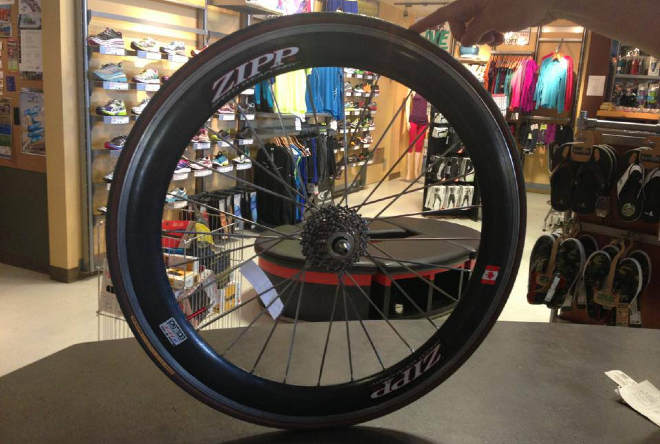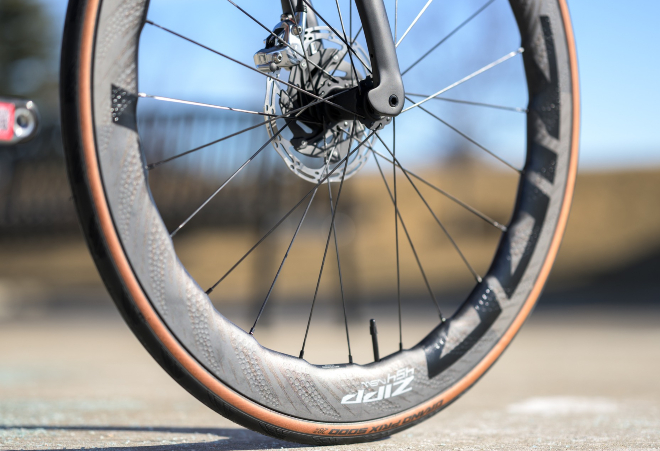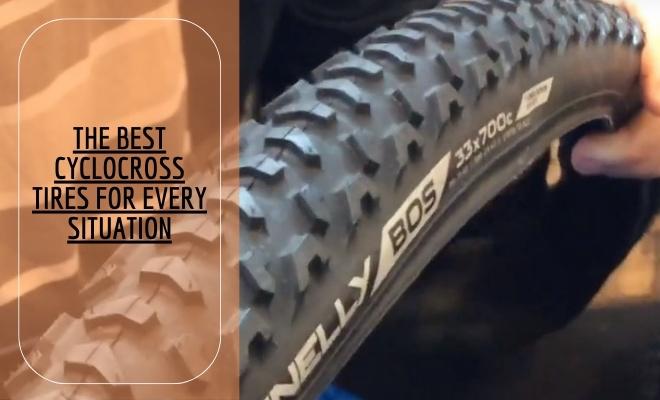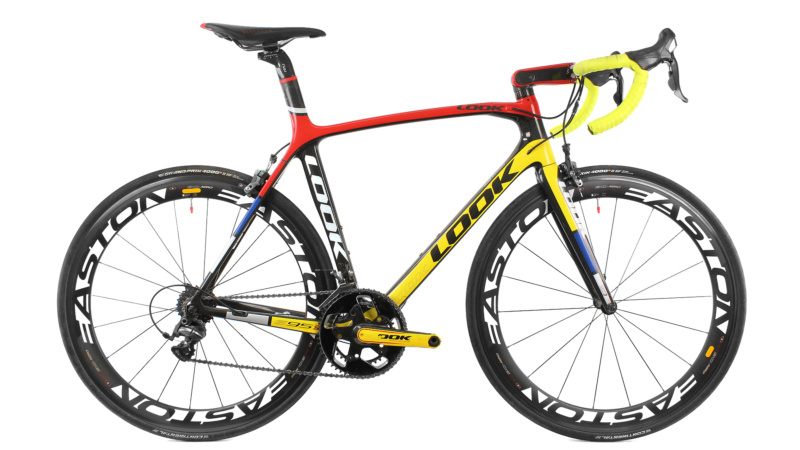In the world of cycling, finding the difference between 700c and 650b wheels has long captivated enthusiasts. The 700c wheel size has always dominated the gravel, touring, mountain, and cyclocross bike scenes.
However, a nostalgic resurgence has brought the old French wheel size, 650b, back into the spotlight. With its suitability for rough terrains and loose surfaces, 650b wheels have become a favorite among adventurers seeking exhilarating rides.
But what about the technical singletrack that 700c wheels struggle to conquer? Fear not, for in the next section, we will delve deeper into the truth behind these wheel sizes.
Let’s have a look at the unique features and uncover which one truly rules the trails.
700C vs 650B : Main Differences in Short
Before we jump into the main topic, let’s have a look at the basic difference between the two wheel size:
| Aspect | 700c Wheels | 650b Wheels |
|---|---|---|
| Diameter | Larger diameter: 700c (622mm) | Smaller diameter: 650b (584mm) |
| Tire Options | Wide range of tire options available | Increasing availability of tire options |
| Handling | Generally offers better straight-line speed | Generally offers improved maneuverability |
| Acceleration | Provides faster acceleration | Offers slightly quicker acceleration |
| Weight | Typically lighter in weight | Slightly heavier compared to 700c wheels |
| Frame Clearance | Commonly found on road, gravel, and cyclocross bikes | Often used on mountain bikes and some gravel bikes |
| Tire Volume | Provides slightly less tire volume | Allows for larger tire volume and increased comfort |
| Suspension | More suitable for bikes without suspension | Preferred on bikes with front suspension |
| Compatibility | Widespread compatibility with various bike components | Limited compatibility with some bike frames and forks |
Where did 650b Wheels come from?
The story of 650b wheels traces back to the hallowed grounds of France. It all began in the early 20th century when the renowned French constructeurs sought to create a versatile wheel size for their bicycles.
Seeking a balance between the nimble 26-inch wheels and the larger 700c wheels, they settled upon the 650b diameter. These wheels proved exceptional on rough roads, tackling challenging terrain with ease.

Over time, their reputation grew, captivating adventurous cyclists who craved a fearless ride. Today, the legacy lives on as manufacturers recognize the demand for 650b wheels, introducing a new era of exhilarating cycling experiences.
Benefits of using 650b Wheels
Here are the main benefits of 650b wheels:
- Enhanced agility and maneuverability on technical trails.
- Improved traction and stability on rough and loose surfaces.
- Greater shock absorption, providing a smoother ride.
- Increased tire volume for added comfort and reduced fatigue.
- Optimal balance between speed and control in off-road conditions.
- Ability to fit wider tires for better grip and flotation.
- Enhanced cornering capabilities and better control in tight turns.
- Suitable for riders of various heights and body types.
- Versatile for a wide range of terrains, from gravel to singletrack.
- Resurgence in popularity, leading to increased availability and options in the market.
And what about 700c wheels?
The 700c wheel size is a staple in the world of cycling. It has long been the default choice for a variety of bike disciplines, including gravel riding, touring, mountain biking, and cyclocross.
With a diameter of 700c, these wheels strike a balance between speed and efficiency on the road. They are well-suited for connecting gravel paths, harder bridleways, and mixed-surface roads.

The 700c wheels offer a smoother ride on paved surfaces, making them popular among road cyclists as well.
While they may not excel in technical singletrack or rough terrains, their versatility and widespread use have made them a trusted companion for many riders.
Benefits of using 700c wheels
The main benefits of using 700c wheels are:
- Efficient on-road performance with a focus on speed and smoothness.
- Ideal for road cycling, providing a balance between rolling resistance and aerodynamics.
- Well-suited for long-distance touring and endurance rides.
- Compatible with narrower tires for increased efficiency on paved surfaces.
- Commonly used in gravel riding for connecting gravel paths and mixed-surface roads.
- The preferred choice for cyclocross racing, offering a blend of speed and agility.
- Availability of a wide range of tire options for customization based on riding preferences.
- Established popularity and widespread adoption, leading to easy accessibility and compatibility with various bike frames and components.
- Reliable choices for commuting and urban cycling due to their stability and performance on paved roads.
- Historically proven and trusted wheel size with a wealth of industry knowledge and support available.
650b vs 700c: Unveiling the Differences
When it comes to choosing the right wheel size for your bike, the debate between 650b and 700c often takes center stage. Here we explore the dissimilarities between these two wheel sizes and uncover the best-suited option for your cycling needs.
Diameter Distinctions:
650b wheels measure 584 mm in diameter, making them approximately 38mm (about 1.5 inches) smaller than their 700c counterparts.
While 700c wheels are sometimes referred to as 29ers or 28 inches, all three share the same diameter of 622 mm. The term “700c” is commonly associated with road bike wheels featuring narrow rims.
Tire Width Versatility
Many gravel, touring, and cyclocross bike frames impose restrictions on maximum tire width, typically accommodating 700c x 40-45 mm tires. By swapping to 650b wheels, you can often fit wider tires ranging from 47-53 mm (up to about 2.1 inches).
The increased tire width of 650b wheels results in a larger contact patch with the ground compared to the narrower tires of 700c wheels, offering improved traction and stability.
Structural Strength and Load Capacity:
Due to their smaller diameter, 650b wheels utilize shorter spokes, resulting in a structurally stronger wheel build.
This increased strength allows 650b wheels to handle heavier loads without compromising performance, making them ideal for bicycle tourists or heavier riders.
In addition to their load-bearing capabilities, 650b wheels contribute to a smoother and more comfortable ride. The use of wider, higher volume tires, typically run at the lower air pressure, absorbs shocks and vibrations from the road, enhancing overall ride quality.
Climbing Gears and Frame Geometry:
Swapping from 700c to 650b wheels provides an extra-low gear ratio, granting cyclists an advantage when conquering challenging climbs.
On small-framed bikes, 650b wheels often align more favorably with frame geometry, creating a more comfortable and natural riding position.
The reduced wheel diameter also slightly lowers the top tube, decreasing the standover height.
Speed, Aerodynamics, and Versatility:
The lighter weight and improved aerodynamics of 650b wheels enable faster acceleration, particularly advantageous in stop-and-go city riding scenarios.
Additionally, transitioning to 650b wheels can transform your bike into a multi-use machine. Some modern 700c road bikes have limited clearance, accommodating only narrow 25mm tires without room for fenders.
By switching to 650b wheels, you gain the freedom to install wider tires and fenders, expanding the range of terrain and weather conditions you can confidently navigate.
As you embark on your wheel size decision, it’s essential to consider your riding preferences and intended terrain. If you prioritize agility, enhanced traction, and a smoother ride on rougher surfaces, 650b wheels may be your optimal choice.
Alternatively, if speed, efficiency, and compatibility with narrower tires are paramount, 700c wheels might better align with your cycling aspirations.
FAQ
#1. Which is faster 650b or 700c?
Ans: In terms of pure speed, 700c wheels generally have the advantage over 650b wheels. The larger diameter of 700c wheels allows them to maintain higher speeds more easily, especially on smooth, paved surfaces.
#2. What does the B in 650b mean?
The “B” in 650b denotes the bead seat diameter of the wheel, which is 584 millimeters. It is a designation used to distinguish this specific wheel size from others, such as the larger 700c or the smaller 26-inch wheels.
Conclusion
Ultimately, there is no definitive answer in the 650b vs. 700c debate. Your decision should be based on your individual needs and the specific demands of your cycling adventures.
Whether you seek the thrill of technical singletrack, the endurance of long-distance touring, or the speed of road cycling, understanding the nuances between these wheel sizes will guide you toward a more informed and satisfying choice.
So, take to the trails, embrace the open road, and let the wheels you choose carry you to new heights.




